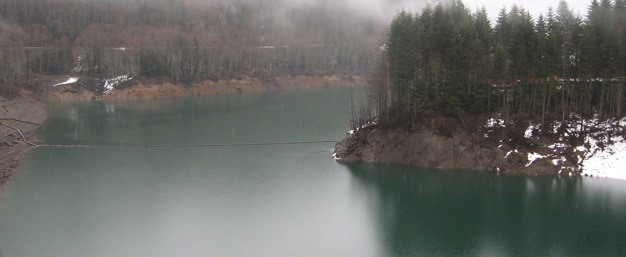As this week’s rainstorm subsided, The U.S. Army Corps of Engineers, Seattle District officials estimate that Mud Mountain and Howard Hanson dams protected nearly one million people and about $2 billion in resources in the White and Green River valleys.
This rainfall and flow rate lands in the Howard Hanson Dam’s top 10 events in history, but many may not have realized the potential impact because the dam functioned according to design, according to a Corps media release.
This is particularly important, according to Corps officials, because they invested around $40 million to improve the safety of Howard Hanson Dam, making repairs due to seepage issues discovered after a flood event in 2009. Without operations of Howard Hanson Dam, estimated flows on the Green River would have been near 22,000 cubic feet per second, nearly double the river’s maximum design flow of 12,000 cfs measured in Auburn.
The river at Auburn was at 8,600 CFS at 3:45 p.m. Friday, Feb. 24.
Before Howard Hanson Dam was constructed in 1962, floodwaters of the Green River periodically spread almost unimpeded across the Green River Valley. In the past 70 years the Valley has flooded more than 30 times, heavily damaging lands and buildings.
Without Mud Mountain Dam’s flood control, flows in Pacific, are estimated to have been near 20,000 cfs. At 8,000 cfs, the National Weather Service issues a flood watch there. Flow rates on Feb. 24 were at 7,100 cfs and water managers at the Corps are slated to gradually decrease them over the weekend until the reservoir reaches its normal state.
Mud Mountain Dam was authorized by the Flood Control Act of 1936 as the main unit of the comprehensive Puyallup River flood control project. To protect the lower Puyallup valley, including half a million people and substantial infrastructure and businesses, the Corps moderates flows to reduce impacts in the lower valley. Both dams ultimately afford residents, businesses and infrastructure a level of protection they didn’t otherwise have.
Being able to make critical adjustments to flow rates to keep residents and infrastructure safe was largely due to the partnership and communication between the Corps, county and community officials. They exchanged information around the clock to ensure the right decisions were made at the right time.
Talk to us
Please share your story tips by emailing editor@kentreporter.com.
To share your opinion for publication, submit a letter through our website https://www.kentreporter.com/submit-letter/. Include your name, address and daytime phone number. (We’ll only publish your name and hometown.) Please keep letters to 300 words or less.

